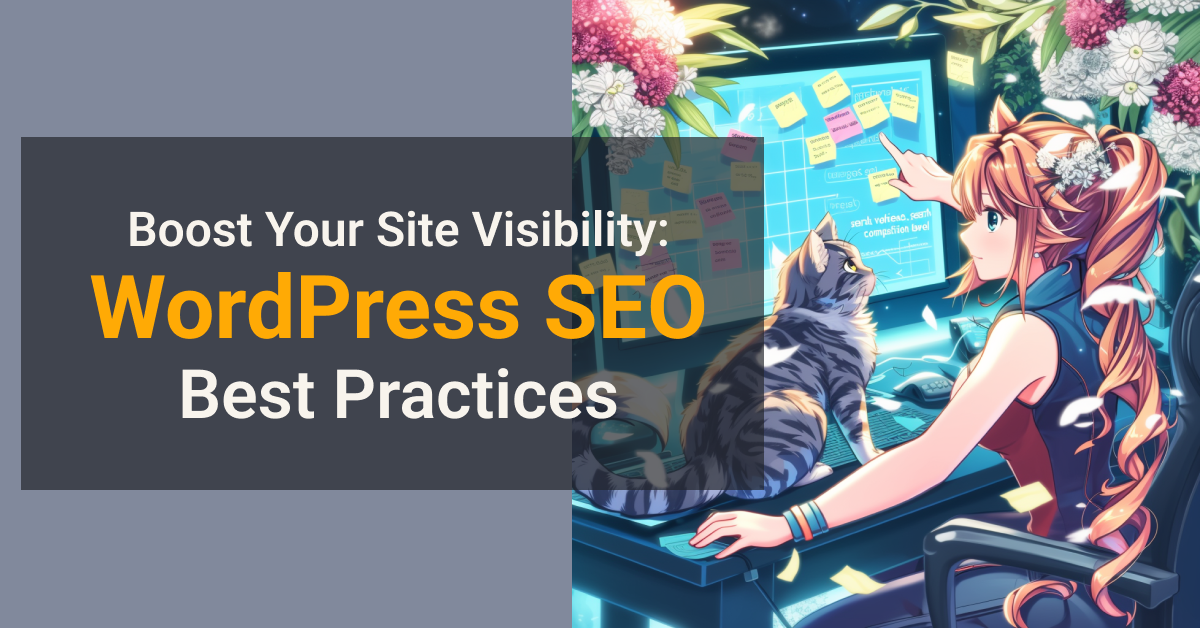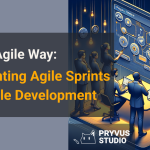
Introduction to WordPress SEO Best Practices
Navigating the world of WordPress SEO can seem like a daunting task, but mastering its best practices is essential for any website looking to climb the ranks of search engine results. With the focus on “wordpress seo best practices,” we’re about to dive deep into the strategies that not only elevate your site’s visibility but also enhance its overall effectiveness in the digital realm.
In this article, you will learn:
- The critical importance of keyword research in shaping your SEO approach.
- How optimizing your WordPress site structure can significantly improve both search engine indexing and user experience.
- Effective techniques for crafting content that not only ranks well but also genuinely engages and retains your audience.
Understanding the Importance of Keyword Research
At the core of any successful SEO strategy lies diligent keyword research. It’s not just about finding words; it’s about understanding what your audience is searching for and how you can meet their needs. For WordPress users, this means diving deep into the specifics of your niche and uncovering the keywords that are not only popular but highly relevant to your content.
The key to unlocking your website’s potential lies in mastering keyword research.
Why is keyword research so crucial, you ask? Well, it guides your content strategy, allowing you to tailor your articles, blogs, and even your site’s structure to what people are actively looking for. Tools like Google’s Keyword Planner, SEMrush, and Ahrefs can offer invaluable insights into search volumes, competition levels, and keyword relevance. Armed with this knowledge, you can optimize your WordPress site to attract more visitors, enhance user engagement, and ultimately, climb the search engine rankings.
But keyword research isn’t a one-off task; it’s an ongoing process. The digital landscape is ever-changing, with new trends and search patterns emerging all the time. Regularly updating your keyword list and adjusting your content accordingly is essential for staying ahead in the SEO game. Remember, the goal is to speak the same language as your potential visitors, making your site a beacon for those seeking solutions or information you provide.
Implementing your keywords effectively is another piece of the puzzle. This involves strategically placing them in your titles, headings, meta descriptions, and throughout your content. However, it’s vital to avoid overstuffing, as this can lead to penalties from search engines. The art is in the balance—using keywords naturally within high-quality, informative content that genuinely benefits your readers.
In conclusion, keyword research is the foundation upon which your WordPress SEO strategy should be built. It informs every aspect of your SEO efforts, from site structure and content creation to link building and beyond. By prioritizing thorough, ongoing keyword research, you’re setting your WordPress site up for long-term success in the competitive world of search engine rankings.
Optimizing Your WordPress Site Structure for SEO
Optimizing your WordPress site structure is akin to laying down a well-planned roadmap. It’s about making your site not just navigable but also easily understandable by search engines. A well-structured site enhances user experience, reduces bounce rates, and significantly improves your site’s SEO performance.

Optimized site structure is your secret weapon for SEO success.
First and foremost, focus on creating a logical hierarchy in your site architecture. This means organizing your content into main categories and subcategories in a way that makes sense both to users and search engines. A clear, logical structure helps search engines index your site more efficiently, which can lead to better visibility and higher rankings.
Permalinks play a crucial role in your site’s structure. WordPress allows you to customize your permalinks, enabling you to include keywords and make your URLs SEO-friendly. This not only aids in search engine indexing but also gives users a clear idea of what to expect on a page.
Internal linking is another critical aspect of optimizing your site structure. By linking related content within your site, you help search engines discover new pages and understand the relationships between different pieces of content. This can boost the SEO value of your pages, especially when you use descriptive anchor texts that include relevant keywords.
Breadcrumbs are yet another tool in your SEO toolkit. These navigational aids not only make it easier for users to understand their location within your site but also provide search engines with another layer of information about your site’s structure. WordPress plugins like Yoast SEO can help you easily add breadcrumbs to your site.
Responsive design is no longer optional in today’s mobile-first world. Ensuring your WordPress site is mobile-friendly is crucial, as search engines like Google prioritize mobile-optimized sites in their rankings. A responsive design ensures your site looks and functions well on all devices, improving user experience and SEO.
In summary, optimizing your WordPress site structure is a multifaceted process that involves careful planning and execution. By focusing on a logical site hierarchy, SEO-friendly URLs, internal linking, breadcrumbs, and responsive design, you’re laying a solid foundation for your site’s SEO success. Remember, a well-structured site not only pleases search engines but also provides a better experience for your visitors, making it a win-win situation.
Enhancing Your Content with SEO-Friendly Techniques
Enhancing your content for SEO isn’t just about peppering your posts with keywords. It’s a nuanced art that combines relevance, readability, and technical savvy to meet both user needs and search engine algorithms. For WordPress sites, employing SEO-friendly techniques can significantly boost your content’s visibility and engagement.

Mastering SEO-friendly content techniques is key to elevating your WordPress site’s performance.
Start with creating compelling, high-quality content. The foundation of SEO-friendly content is its ability to engage and provide value to readers. Use your keyword research to guide topic selection, ensuring your posts answer the questions your audience is asking. Make your content informative, engaging, and enriched with practical insights or solutions.
Use headings and subheadings effectively. Not only do they make your content easier to read, but they also help search engines understand the structure of your posts. Incorporating keywords into your H1, H2, and H3 tags can enhance your SEO, but remember to keep it natural and user-focused.
Optimize your images by using descriptive file names and alt attributes that include your target keywords. This not only improves accessibility but also gives search engines more context about your content. Plus, optimized images can appear in image search results, driving additional traffic to your site.
Enhance readability by keeping paragraphs short, using bullet points or numbered lists, and incorporating transitional phrases to guide readers through your content. A user-friendly experience keeps visitors on your site longer, reducing bounce rates and signaling to search engines that your content is valuable.
Incorporate internal and external links to provide further reading options and boost your SEO. Internal links keep users engaged with your content, while external links to reputable sites can enhance your site’s credibility. Use descriptive anchor texts that give users and search engines context about the linked content.
Lastly, don’t forget about the power of social sharing. Include social media share buttons on your posts to encourage distribution. While social signals are not a direct ranking factor, they can increase visibility and traffic, indirectly benefiting your SEO.
In conclusion, enhancing your WordPress content with SEO-friendly techniques requires a balanced approach that prioritizes quality, user engagement, and technical optimization. By implementing these strategies, you’ll not only improve your site’s search engine rankings but also provide a superior experience for your visitors.
Maximizing Visibility with Meta Tags and Descriptions
Meta tags and descriptions play a pivotal role in enhancing your WordPress site’s SEO and user click-through rates from search engine results pages (SERPs). These snippets of text might seem minor, but they’re your first opportunity to make an impression on potential visitors. Let’s dive into how to craft these elements for maximum impact.
Optimizing meta tags and descriptions is crucial for improving visibility and enticing clicks.
Meta titles and descriptions serve as a concise preview of your page’s content, informing both users and search engines about the relevance of your page. For WordPress sites, it’s essential to optimize these for each page and post to improve your visibility in SERPs.
Your meta title should be under 60 characters to ensure it displays fully in search results, incorporating your primary keyword towards the beginning. This helps improve the relevance of your page for specific search queries. Similarly, meta descriptions should be compelling and under 155 characters, offering a clear value proposition to encourage clicks. Including a call-to-action (CTA) can further increase your click-through rate.
While meta tags don’t directly influence your search rankings, they do affect user behavior in SERPs, which in turn can impact your SEO. A well-crafted meta description can make the difference between a user clicking on your site or a competitor’s.
To optimize your meta tags and descriptions in WordPress, plugins like Yoast SEO and All in One SEO Pack can be invaluable. They allow you to easily customize these elements for each page and post, providing real-time feedback to ensure you’re meeting length requirements and using keywords effectively.
It’s also worth noting the importance of schema markup. This form of microdata helps search engines understand the content of your page, potentially leading to rich snippets in search results that can boost your visibility and click-through rates. Many WordPress plugins support schema markup, making it easier to implement.
In conclusion, by optimizing your meta tags and descriptions, you’re not just enhancing your site’s SEO; you’re also improving the user experience in search results. Take the time to craft these elements carefully for each page and post, and you’ll likely see an increase in traffic and engagement on your WordPress site.
Leveraging WordPress Plugins for SEO Optimization
The WordPress ecosystem offers a treasure trove of plugins designed to simplify SEO optimization. These tools can significantly enhance your site’s performance in search rankings, automating tasks that would otherwise require extensive technical knowledge. Let’s explore how you can leverage these plugins to boost your SEO efforts.

Choosing the right WordPress plugins is a game-changer for your SEO strategy.
Yoast SEO is arguably the most popular SEO plugin for WordPress, offering a comprehensive suite of features that cover everything from meta tags optimization to readability checks. It guides you through optimizing your posts and pages, making suggestions to improve both SEO and user engagement. With its traffic light system, you can easily see where improvements are needed.
Another invaluable tool is the All in One SEO Pack, which provides similar functionalities. It’s particularly user-friendly for beginners, offering automatic optimizations for titles and descriptions, as well as support for custom post types. This plugin also includes features for generating XML sitemaps, which are crucial for ensuring search engines can crawl and index your site efficiently.
For those looking to optimize site speed, WP Rocket is a must-have. It improves your site’s loading times through caching, file optimization, and image lazy loading, contributing to a better user experience and higher search engine rankings. Fast-loading pages are a key ranking factor for Google, making this plugin a valuable asset.
Schema Pro is another essential plugin for enhancing your WordPress site’s SEO. It simplifies the process of adding schema markup to your site, which can help your pages appear as rich snippets in search results. These enhanced listings can improve visibility and click-through rates.
Lastly, the Rank Math plugin has been gaining popularity for its user-friendly interface and extensive feature set. It offers SEO analysis based on 40 factors, easy schema markup integration, and keyword ranking tracking. Rank Math provides detailed insights that can help you fine-tune your SEO strategy.
In conclusion, leveraging WordPress plugins for SEO optimization can dramatically improve your site’s search engine performance. By selecting and effectively using the right tools, you can ensure your site is fully optimized, from on-page content to technical SEO aspects. Remember, while plugins can automate many tasks, a successful SEO strategy also requires quality content and ongoing optimization efforts.
Improving Site Speed for Better SEO Rankings
Site speed is a critical factor for SEO rankings and user experience. In today’s fast-paced digital world, visitors have little patience for slow-loading websites, and search engines like Google prioritize faster sites in their rankings. Let’s dive into how you can improve your WordPress site’s speed for better performance.

Boosting your WordPress site’s speed is essential for SEO success and user satisfaction.
Firstly, choose a reliable hosting provider. Your hosting service plays a significant role in your site’s performance. Opt for a provider known for its speed and uptime. Consider managed WordPress hosting services that offer optimized server configurations for WordPress sites.
Utilize caching plugins like WP Rocket or W3 Total Cache. These plugins generate static HTML pages of your site, reducing the load time significantly. Caching is one of the most effective ways to speed up your WordPress site with minimal effort.
Optimize your images. Large images can drastically slow down your site. Use tools like Smush or ShortPixel to compress your images without losing quality. Also, consider lazy loading images, so they only load when they’re about to enter the viewport.
Minimize the use of plugins. While plugins add functionality to your site, having too many can slow it down. Regularly review your plugins and keep only those that are necessary. Always ensure they’re updated to their latest versions for optimal performance and security.
Minify and combine CSS and JavaScript files. Reducing the size of these files and combining them can decrease the number of requests your site makes, speeding up loading times. Plugins like Autoptimize can handle this task efficiently.
Use a content delivery network (CDN). A CDN stores copies of your site on servers around the world, allowing users to load your site from a server that’s closest to them. This can significantly reduce loading times for visitors from different geographical locations.
Finally, regularly monitor your site’s speed using tools like Google PageSpeed Insights or GTmetrix. These tools provide valuable insights into your site’s performance and offer recommendations for improvement.
In conclusion, improving your WordPress site’s speed is a multifaceted process that involves choosing the right hosting, optimizing content, minimizing plugin use, and employing caching and CDN services. By prioritizing site speed, you’re not only enhancing your SEO rankings but also providing a better experience for your visitors.
Building Quality Backlinks: Strategies and Best Practices
Building quality backlinks is a cornerstone of effective SEO strategy. Backlinks, or inbound links from other websites, signal to search engines that your content is valuable and authoritative. Let’s explore strategies and best practices for building backlinks that can boost your WordPress site’s SEO rankings.

Quality backlinks are your ally in climbing the SEO ladder.
Start by creating high-quality, shareable content. The foundation of earning backlinks is having content that other sites want to reference. This can be in-depth articles, infographics, research studies, or compelling visuals. Content that adds value and is unique to your niche is more likely to garner attention and links.
Guest blogging is another effective strategy. By contributing to reputable sites in your industry, you not only gain backlinks but also establish your expertise and reach a wider audience. Ensure the sites you guest blog for are relevant to your niche and have a good domain authority.
Engage in industry communities and forums. Participating in discussions on platforms like Reddit, Quora, or industry-specific forums can lead to natural backlink opportunities. Offer valuable insights and include links to your content when relevant, but avoid spammy behavior.
Utilize broken link building. This involves finding broken links on other websites and suggesting your content as a replacement. Tools like Ahrefs or SEMrush can help you identify broken links in your niche. Reach out to the site owners with a polite email, offering your content as a valuable resource to replace the broken link.
Leverage social media and content sharing platforms. While links from social media don’t directly impact SEO rankings, they can increase visibility and lead to backlinks indirectly. Share your content on platforms like LinkedIn, Twitter, and Pinterest to boost engagement and potential link-building opportunities.
Collaborate with influencers or industry leaders. Collaborations can lead to backlinks from their websites or social media profiles. This not only enhances your link profile but also exposes your content to a broader audience.
In summary, building quality backlinks requires a mix of content creation, networking, and strategic outreach. By focusing on these strategies, you can improve your WordPress site’s authority, search engine rankings, and overall visibility. Remember, the key is to pursue authentic, valuable connections rather than chasing links for the sake of numbers.
Monitoring and Analyzing Your SEO Performance
Monitoring and analyzing your SEO performance is crucial to understanding the effectiveness of your strategies and making informed decisions to improve your site’s search engine rankings. For WordPress site owners, this means regularly checking various metrics and adapting your SEO practices based on data-driven insights.
Keeping a close eye on your SEO performance illuminates the path to optimization success.
Google Analytics and Google Search Console are indispensable tools for tracking your site’s performance. Google Analytics provides insights into your website’s traffic, user behavior, and engagement metrics, helping you understand how visitors interact with your site. Google Search Console, on the other hand, offers valuable information on your site’s visibility in search results, including impressions, clicks, and your average position for specific queries.
Regularly reviewing your keyword rankings is essential for assessing how well your content aligns with what your audience is searching for. Tools like Ahrefs, SEMrush, or Moz can track your rankings for target keywords, offering insights into your SEO campaign’s effectiveness and areas for improvement.
Backlink analysis is another critical component of SEO monitoring. Tools like Ahrefs and Majestic provide comprehensive insights into your site’s backlink profile, including the number of backlinks, their quality, and the referring domains. This information is vital for understanding the impact of your link-building efforts and identifying opportunities to acquire more high-quality links.
Site speed and mobile usability are also important metrics to monitor. Tools like Google PageSpeed Insights and GTmetrix can analyze your site’s performance and offer recommendations for improvement. Ensuring your site is fast and mobile-friendly is essential for both user experience and SEO.
Finally, it’s important to monitor your competitors’ SEO performance. Understanding their strategies, keyword rankings, and backlink profiles can provide valuable insights into industry trends and reveal opportunities to enhance your own SEO efforts.
In conclusion, monitoring and analyzing your SEO performance is a continuous process that requires the use of various tools and resources. By keeping a close eye on your site’s metrics and adapting your strategies accordingly, you can improve your WordPress site’s search engine rankings and drive more organic traffic to your site.
Conclusion: Staying Ahead in SEO with WordPress
Staying ahead in the ever-evolving SEO landscape requires ongoing effort, adaptability, and a keen eye for the latest trends and algorithm updates. WordPress, with its extensive ecosystem of plugins and themes, offers a solid foundation for optimizing your site for search engines. However, leveraging this platform to its fullest potential involves more than just setting up a site and forgetting about it.
To maintain and improve your SEO rankings, commit to continuous learning and optimization.
Regularly updating your content, keeping abreast of SEO best practices, and utilizing the right mix of plugins are crucial steps toward maintaining a competitive edge. Additionally, engaging with your audience through quality content and ensuring a seamless user experience can foster loyalty and encourage repeat visits, which positively impact your SEO rankings.
As search engines become more sophisticated, focusing on delivering genuine value to your visitors is paramount. This means creating content that answers their questions, solves their problems, and enriches their online experience. Remember, SEO is not just about technical tweaks and keyword placements; it’s about building a site that people want to visit, share, and return to.
In the journey of SEO optimization, metrics and analysis are your compass. They guide your decisions and highlight areas for improvement. Embrace the data-driven approach to refine your strategies, ensuring your WordPress site not only reaches its target audience but also delivers on its promise of value and quality.
In summary, staying ahead in SEO with WordPress is a dynamic and ongoing process that demands your attention and creativity. By focusing on quality content, user experience, and smart optimization strategies, you can ensure your site remains visible, valuable, and ahead of the curve in the digital landscape.


